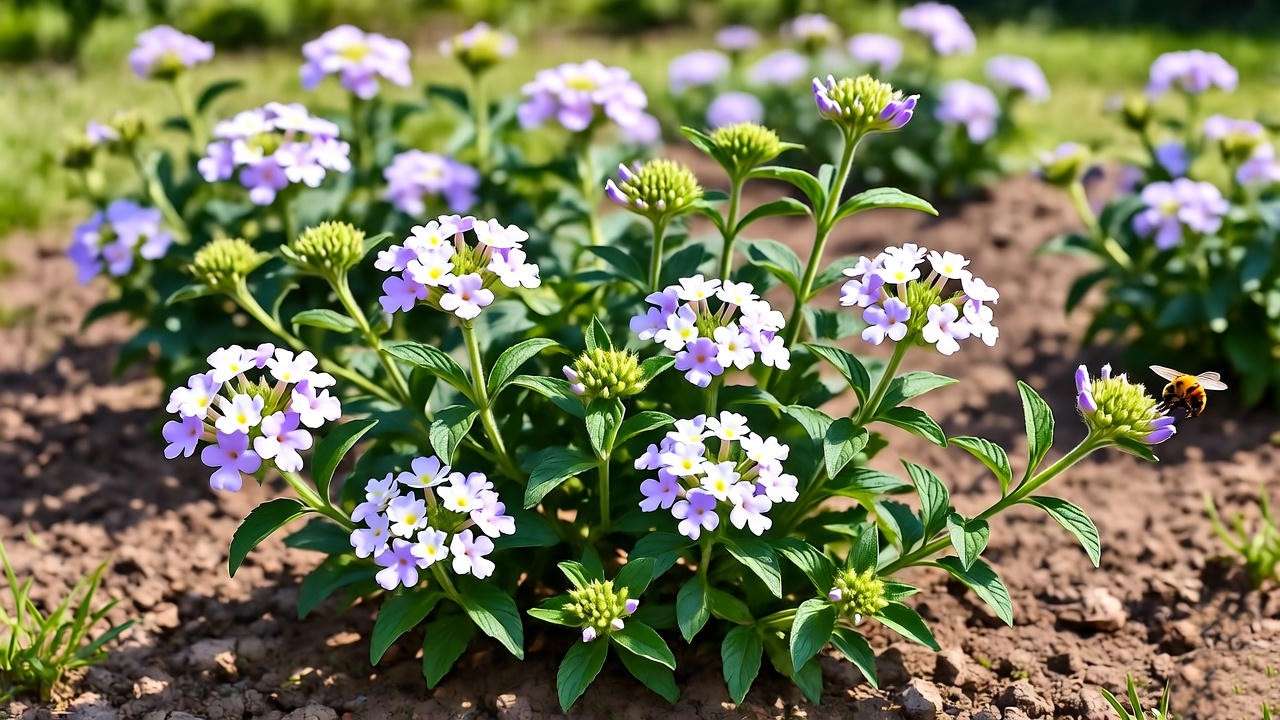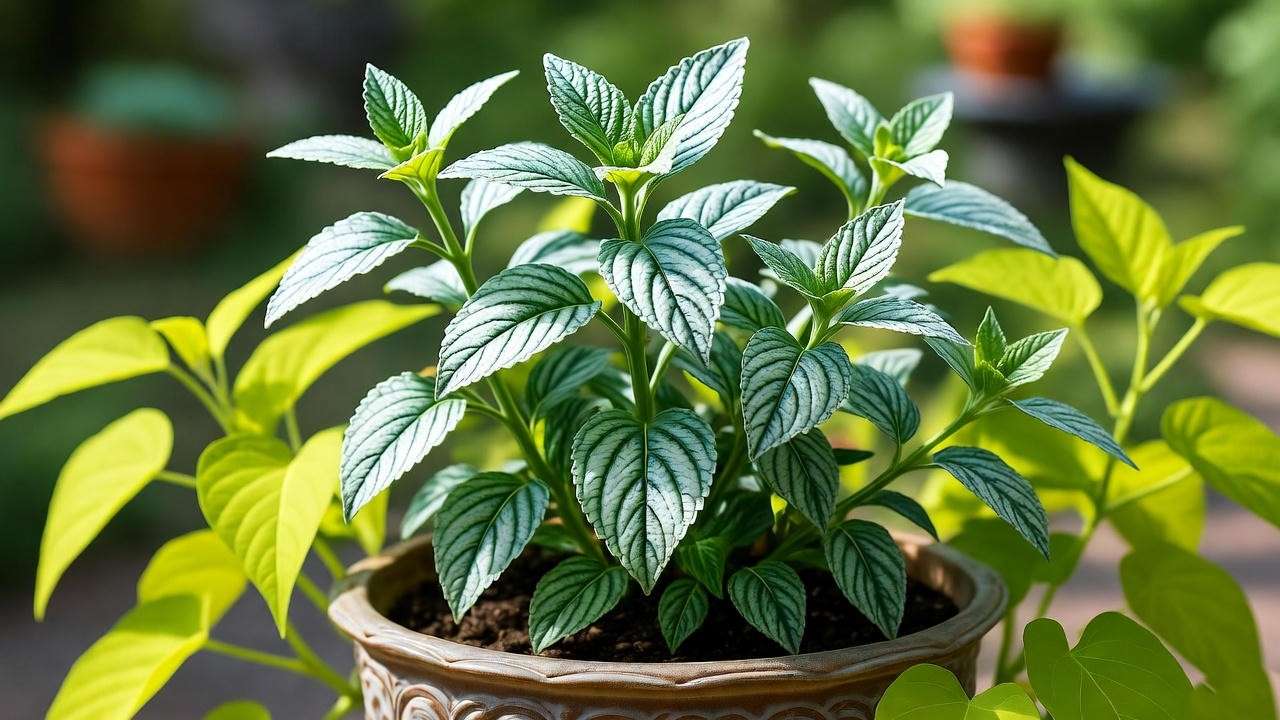Imagine stepping into your garden and being enveloped by a sweet, almond-like fragrance that lingers in the air, drawing butterflies and hummingbirds to your yard. The sweet almond verbena plant (Aloysia virgata), with its clusters of delicate white flowers and low-maintenance charm, is a gardener’s dream. Whether you’re a seasoned horticulturist or a beginner looking to add a touch of elegance to your outdoor space, this plant delivers beauty, fragrance, and ease in one package. In this comprehensive guide, we’ll walk you through everything you need to know to grow, care for, and troubleshoot issues with the sweet almond verbena plant, ensuring your garden thrives with minimal effort. From planting tips to pest control, this article is your roadmap to cultivating a fragrant, pollinator-friendly garden star.
What Is the Sweet Almond Verbena Plant? 🌿
Overview of the Plant
The sweet almond verbena, scientifically known as Aloysia virgata, is a fast-growing, evergreen shrub native to South America, particularly Argentina and Brazil. Often called almond verbena or incense bush, it’s celebrated for its clusters of tiny, white, tubular flowers that emit a heavenly almond-like scent. This plant can grow 6–15 feet tall and wide, making it a versatile choice for various garden styles. Its long blooming season, typically from late spring to fall, and its ability to thrive in warm climates have made it a favorite among gardeners.
Benefits of Growing Sweet Almond Verbena
Why choose the sweet almond verbena for your garden? Here are some compelling reasons:
- Aesthetic Appeal: Its lush green foliage and delicate white blooms add elegance to any landscape.
- Fragrance: The sweet, almond-like scent transforms your garden into a sensory haven, especially in the evening.
- Low Maintenance: Once established, it requires minimal care, perfect for busy gardeners or those new to plant care.
- Pollinator-Friendly: The flowers attract bees, butterflies, and hummingbirds, boosting biodiversity 🐝🦋.
- Versatility: Use it as a hedge, border, or in containers for patios and balconies.
Ideal Growing Conditions for Sweet Almond Verbena 🌞
Sunlight Requirements
Sweet almond verbena thrives in full sun, requiring at least 6 hours of direct sunlight daily to produce abundant blooms and maintain healthy growth. If you’re in a region with partial shade, ensure the plant gets morning sun to maximize its flowering potential. In shadier conditions, you may notice fewer blooms or leggy growth. To optimize light exposure, position the plant away from tall structures or trees that cast shadows during peak sunlight hours.

Soil Preferences
This plant prefers well-draining, loamy soil with a pH range of slightly acidic to neutral (6.0–7.5). While it’s adaptable to various soil types, including sandy or clay-heavy soils, good drainage is critical to prevent root rot. If your soil is compacted or retains water, amend it with organic matter like compost or aged manure to improve texture and drainage. Testing your soil’s pH with a home kit can help you make precise adjustments for optimal growth.
Climate and Hardiness Zones
Sweet almond verbena is hardy in USDA Zones 8–11, making it ideal for warm, temperate climates. It’s highly drought-tolerant and heat-resistant, thriving in arid regions with minimal water once established. In cooler climates (Zone 7 or below), the plant may die back in winter but can regrow from the roots in spring if protected. Use mulch or frost blankets to insulate the roots during cold snaps, or consider growing it in containers to bring indoors during winter.
How to Plant Sweet Almond Verbena 🌱
Choosing the Right Location
Selecting the perfect spot is key to your plant’s success. Choose a location with full sun and good air circulation to prevent fungal issues. If planting multiple shrubs for a hedge or border, space them 3–5 feet apart to allow for their mature size. Avoid low-lying areas where water pools, as this can lead to root rot. For urban gardeners, sweet almond verbena adapts well to patios or balconies when grown in containers.
Planting from Seed vs. Nursery Stock
You can start sweet almond verbena from seeds or nursery-grown plants, each with its advantages:
- Seeds: Starting from seeds is cost-effective but requires patience, as germination can take 2–4 weeks. Sow seeds in spring in a seed-starting mix, keeping them moist and warm (70–75°F). Transplant seedlings once they have 2–3 true leaves.
- Nursery Stock: Purchasing established plants from a reputable nursery ensures faster results and stronger plants. Look for healthy specimens with vibrant leaves and no signs of pests or disease.
Step-by-Step Planting Guide:
- Dig a hole twice as wide and as deep as the root ball or seedling container.
- Mix compost into the soil to improve fertility and drainage.
- Place the plant in the hole, ensuring the top of the root ball is level with the soil surface.
- Backfill with soil, gently tamping down to remove air pockets.
- Water thoroughly to settle the soil and encourage root establishment.

Container Gardening Tips
Sweet almond verbena shines in container gardening, making it a great choice for small spaces. Use a pot at least 12–18 inches in diameter with drainage holes to prevent waterlogging. Fill with a high-quality potting mix blended with perlite or sand for drainage. Place the container in a sunny spot, and rotate it occasionally to ensure even light exposure. Repot every 2–3 years or when the plant becomes root-bound, upgrading to a slightly larger pot.

Caring for Your Sweet Almond Verbena Plant 🌿
Watering Needs
Once established, sweet almond verbena is drought-tolerant and requires deep, infrequent watering. Water young plants weekly until their roots are established (about 6–8 weeks). For mature plants, water every 10–14 days during dry periods, ensuring the soil dries out slightly between sessions. Overwatering can lead to yellowing leaves or root rot, while underwatering may cause wilting or reduced blooms. Adjust watering based on your climate—less in humid regions, more in arid ones.
Fertilizing for Optimal Growth
To encourage lush foliage and abundant flowers, fertilize in spring and early summer with a balanced, slow-release fertilizer (e.g., 10-10-10). Apply according to package instructions, avoiding over-fertilization, which can lead to excessive leaf growth at the expense of blooms. Organic options like compost tea or fish emulsion work well for eco-conscious gardeners. Avoid fertilizing in late summer or fall to prevent tender new growth that’s vulnerable to cold.
Pruning and Maintenance
Regular pruning keeps sweet almond verbena tidy and promotes continuous blooming. Prune in early spring to shape the plant and remove dead or damaged branches. Deadhead spent flowers throughout the growing season to encourage new blooms. If the plant becomes leggy, cut back up to one-third of its height to stimulate bushier growth. Always use clean, sharp pruning shears to prevent disease transmission. Remove debris around the plant base to deter pests and fungi.
Pest and Disease Management
Sweet almond verbena is relatively pest-resistant but may occasionally attract aphids, whiteflies, or spider mites. Inspect leaves regularly for signs of infestation, such as sticky residue or webbing. Treat minor infestations with neem oil or insecticidal soap, applied early in the morning or late evening. In humid climates, watch for fungal issues like powdery mildew. Ensure good air circulation and avoid overhead watering to prevent fungal growth. If problems persist, consult a local extension service for region-specific advice.
Propagating Sweet Almond Verbena 🌱
Propagation Methods
Propagating sweet almond verbena is an easy, cost-effective way to expand your garden. The most reliable method is stem cuttings:
- In late spring or early summer, select a healthy, non-flowering stem (4–6 inches long).
- Remove lower leaves, leaving 2–3 pairs at the top.
- Dip the cut end in rooting hormone (optional) to boost success.
- Plant the cutting in a pot filled with a moist mix of perlite and potting soil.
- Cover with a plastic bag to maintain humidity, and place in bright, indirect light.
- Roots should form in 3–4 weeks; transplant once roots are established.
Caring for New Plants
Newly rooted cuttings need extra care to thrive. Keep the soil consistently moist but not soggy, and avoid direct sunlight until the plant is established. Gradually acclimate the cutting to outdoor conditions over 7–10 days. Monitor for pests and ensure proper drainage to prevent root rot. Once the plant shows new growth, treat it like a mature sweet almond verbena, following the care guidelines above.
Creative Uses for Sweet Almond Verbena in Your Garden 🏡
Landscaping Ideas
The sweet almond verbena plant is a versatile addition to any landscape, offering both aesthetic and functional benefits. Its tall, bushy growth makes it an excellent choice for hedges or privacy screens, creating a fragrant barrier along property lines. For a more formal look, plant it as a border along pathways or garden beds, where its white blooms and lush foliage add elegance. Pair it with complementary plants like lavender, rosemary, or salvia for a cohesive, vibrant design. For a romantic touch, use it as a focal point in a cottage-style garden, surrounded by low-growing perennials like catmint or coreopsis.
Incorporating into Pollinator Gardens
Sweet almond verbena is a pollinator magnet, attracting bees, butterflies, and hummingbirds with its nectar-rich flowers. To create a pollinator-friendly garden, plant it alongside other nectar-heavy plants like bee balm, coneflowers, or milkweed. Position the plants in a sunny, open area to maximize pollinator access. Consider adding a small water feature, such as a birdbath, to provide hydration for visiting pollinators 🦋🐝. This not only boosts biodiversity but also creates a lively, dynamic garden that supports local ecosystems.

Container and Patio Displays
For urban gardeners or those with limited space, sweet almond verbena thrives in containers, adding fragrance and beauty to patios, balconies, or courtyards. Choose a decorative pot that complements your outdoor decor, and pair the plant with trailing plants like sweet potato vine or colorful annuals like petunias for a stunning display. Place the pot in a sunny corner and rotate it occasionally to ensure even growth. The plant’s almond-like scent makes it perfect for seating areas, where you can enjoy its fragrance during evening gatherings.
Common Problems and Solutions for Sweet Almond Verbena 🌿
Why Isn’t My Plant Blooming?
A lack of blooms can be frustrating, but it’s often fixable with a few adjustments. Common reasons include:
- Insufficient Sunlight: Ensure the plant receives at least 6 hours of direct sun daily. Relocate container plants or trim nearby trees to reduce shade.
- Over-Fertilizing: Too much nitrogen can lead to lush foliage but few flowers. Switch to a low-nitrogen, phosphorus-rich fertilizer to encourage blooming.
- Improper Pruning: Pruning at the wrong time (e.g., late fall) can remove flower buds. Prune in early spring before new growth begins.
To boost blooms, deadhead spent flowers regularly and ensure the plant is in well-draining soil with adequate sunlight.
Yellowing Leaves or Dropping Foliage
Yellowing leaves or leaf drop can signal several issues:
- Overwatering: Check the soil for sogginess. Allow it to dry out between waterings, and ensure proper drainage.
- Nutrient Deficiency: Yellowing may indicate a lack of nitrogen or iron. Apply a balanced fertilizer or use a foliar spray with chelated iron.
- Pest Infestation: Inspect for aphids or spider mites, which can cause leaf damage. Treat with neem oil or insecticidal soap.
Test your soil and adjust care practices accordingly. If the problem persists, consult a local nursery for region-specific advice.

Winter Care in Colder Climates
In USDA Zones 7 or below, sweet almond verbena may not survive harsh winters without protection. To overwinter outdoors, apply a 2–3 inch layer of mulch (e.g., straw or bark) around the base to insulate the roots. In colder regions, consider growing the plant in a container and bringing it indoors during winter. Place it in a sunny window or under grow lights, and reduce watering to prevent root rot. If the plant dies back, don’t despair—it may regrow from the roots in spring with proper care.
Expert Tips for Thriving Sweet Almond Verbena Plants 🌟
To elevate your sweet almond verbena game, here are some expert insights from horticulturists:
- Maximize Fragrance: Plant near walkways or seating areas to enjoy the almond-like scent, which is strongest in the evening. “The sweet almond verbena’s fragrance is a natural mood-lifter,” says Dr. Maria Lopez, a horticulturist with 20 years of experience in subtropical plants.
- Seasonal Care Calendar:
- Spring: Prune, fertilize, and plant new shrubs.
- Summer: Deadhead flowers and monitor for pests.
- Fall: Reduce watering and prepare for winter in cooler climates.
- Winter: Protect roots or bring containers indoors.
- Sustainable Practices: Use drip irrigation to conserve water, and incorporate compost to enrich soil naturally. Avoid chemical pesticides to protect pollinators.
These tips ensure your plant remains healthy, fragrant, and visually stunning year-round.
FAQs About Sweet Almond Verbena Care ❓
Is Sweet Almond Verbena Invasive?
No, sweet almond verbena is not considered invasive. It grows quickly but does not spread aggressively like some other plants. Regular pruning keeps its size in check.
How Fast Does It Grow?
In ideal conditions, sweet almond verbena can grow 2–3 feet per year, reaching maturity (6–15 feet) in 2–3 years. Growth is faster in warm climates with ample sunlight.
Can It Survive in Pots Long-Term?
Yes, with proper care, sweet almond verbena thrives in containers long-term. Use a large pot with good drainage, repot every 2–3 years, and ensure it gets enough sunlight and water.
What’s the Best Way to Overwinter It in Cold Climates?
In Zones 7 or below, mulch heavily or bring container plants indoors. Place them in a bright, cool area (50–60°F) and water sparingly to prevent rot.
Are There Any Toxic Concerns for Pets or Humans?
Sweet almond verbena is non-toxic to humans and pets, making it a safe choice for family gardens. However, avoid ingestion, as it’s not an edible plant.
Conclusion: Transform Your Garden with Sweet Almond Verbena 🌸
The sweet almond verbena plant is a true garden gem, combining intoxicating fragrance, low-maintenance care, and pollinator-friendly blooms in one versatile package. Whether you’re creating a fragrant hedge, a vibrant pollinator garden, or a stunning patio display, this plant delivers beauty and ease for gardeners of all skill levels. By following the tips in this guide—choosing the right location, providing proper care, and troubleshooting issues—you’ll enjoy a thriving sweet almond verbena that enhances your outdoor space for years to come. Ready to get started? Plant your sweet almond verbena today and share your success stories in the comments below! Explore our other plant care guides for more ways to elevate your garden 🌿.













